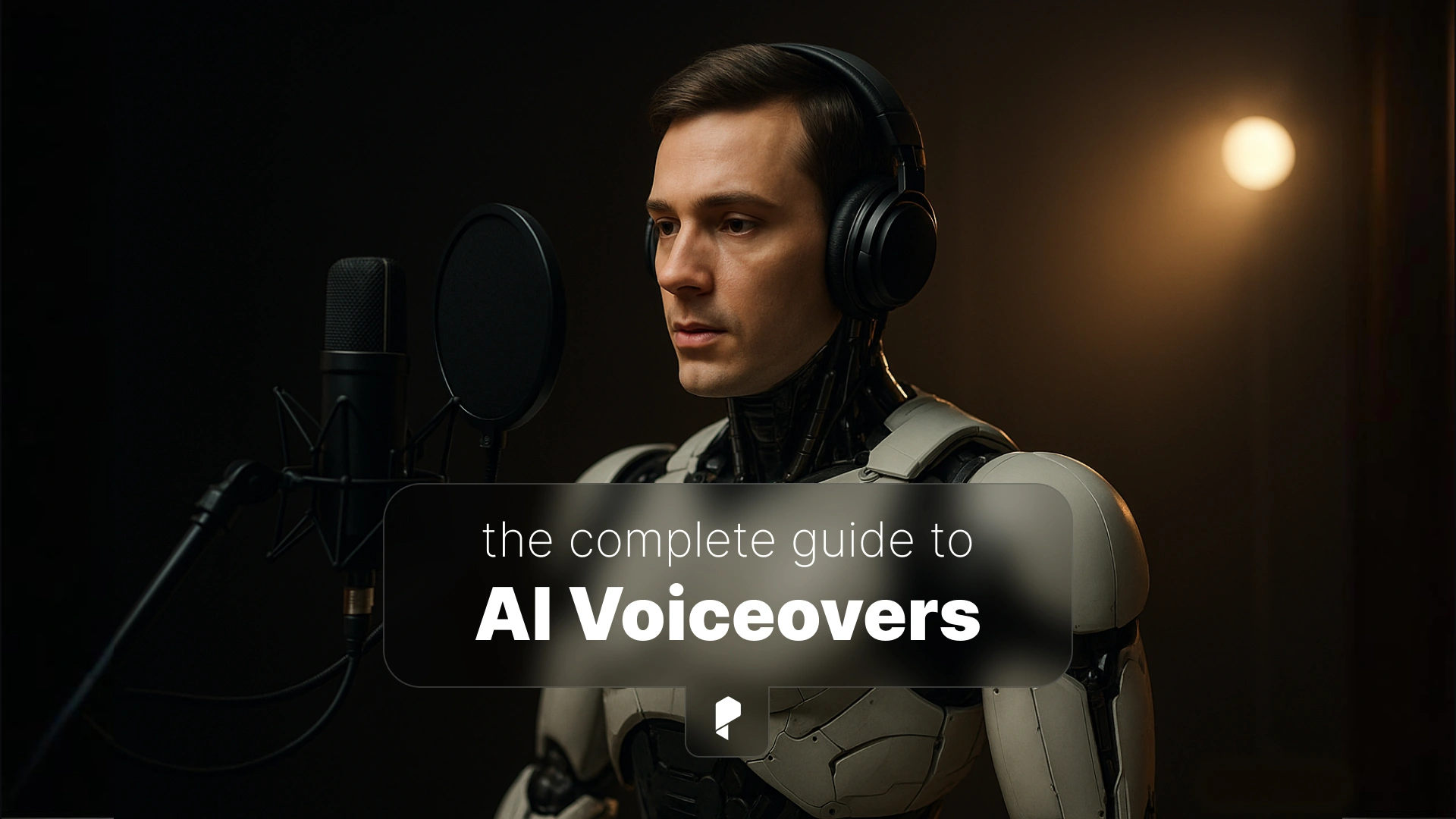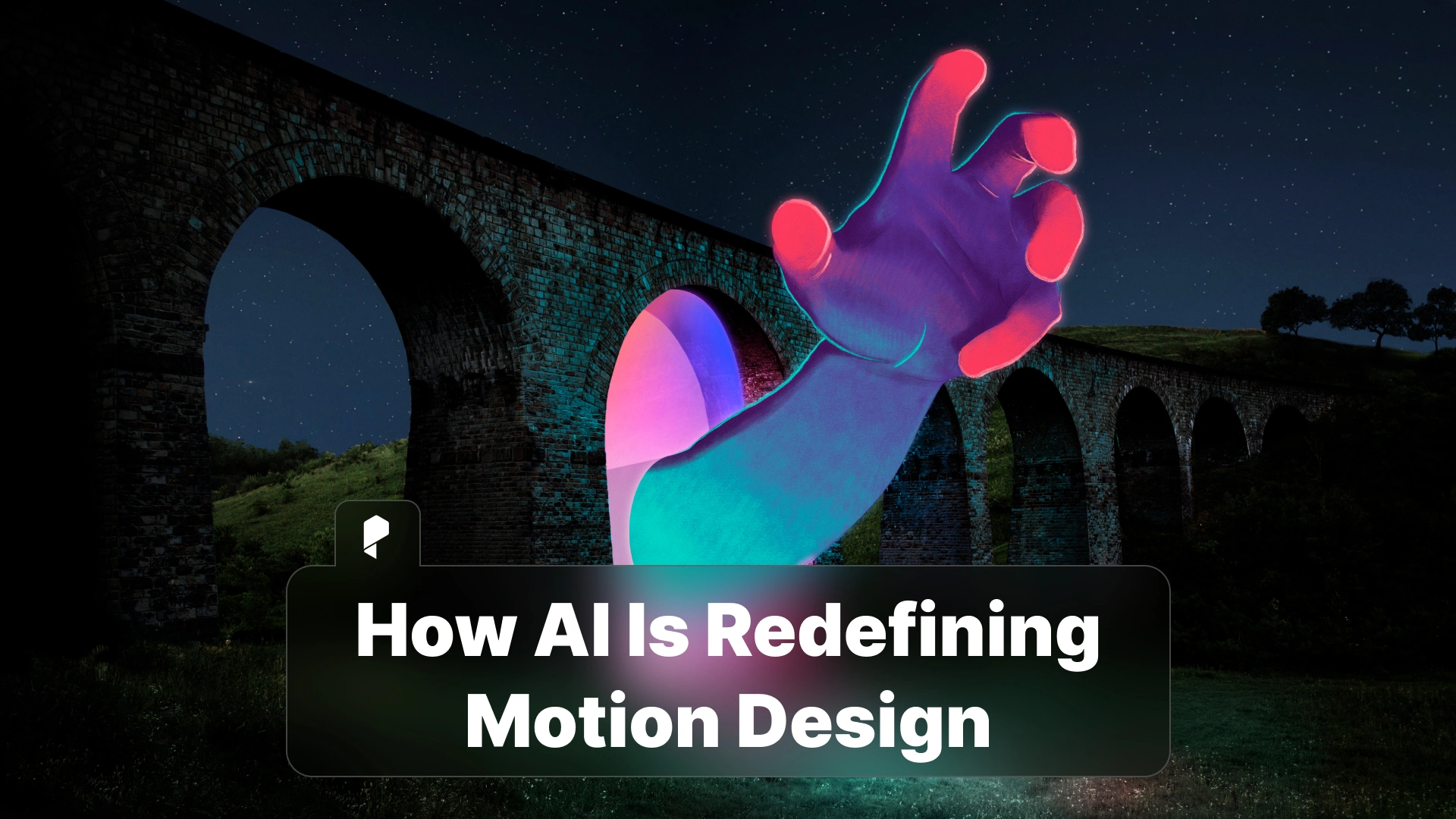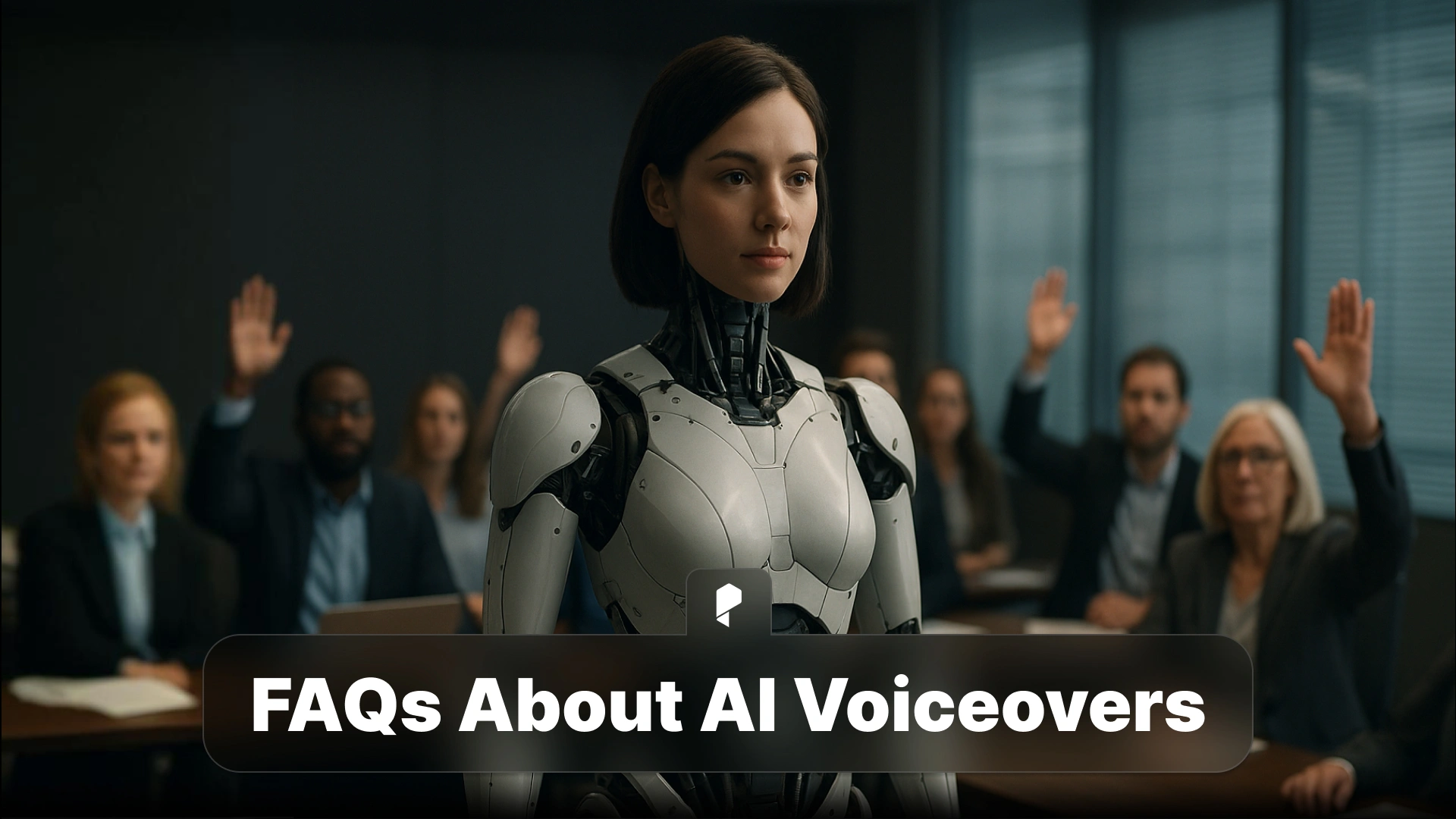AI Voiceovers: The Complete Guide (2025 Edition)

They’re exploding in popularity thanks to their use in YouTube videos, ads, podcasts, and online courses, making professional narration accessible to everyone.
In this guide, we’ll cover everything you need to know: what AI voiceovers are, how they work, the best tools, benefits, challenges, and where the future is heading.
👉 If you’d like to try them right away, check out Pixflow’s AI Voiceover solution to generate realistic voices instantly.
What Are AI Voiceovers?
Traditional text-to-speech (TTS) AI often sounded robotic and flat, but modern neural voice synthesis has changed the game. Today’s voices can mimic natural pauses, intonations, and even emotions.
You already hear them daily:
- Smart assistants like Alexa and Google Assistant
- Automated customer service systems
- Navigation apps
- Online learning platforms and explainer videos
This leap from robotic to realistic AI voices is why creators and businesses are rapidly adopting the technology. 👉 Learn more in our AI Voiceover plugin page.
How Do AI Voiceovers Work?
The result is neural voice synthesis, which can generate highly realistic speech from any text input.
A big innovation here is voice cloning AI. With just a short sample of someone’s voice, AI can replicate their tone and style, opening possibilities for personalization, but also raising ethical questions we’ll cover later.
👉 Deep dive: How AI Voiceovers Work: Technology Behind the Voices
Professional Video Templates
Benefits of AI Voiceovers
- Cost savings → Hiring professional voice actors can cost hundreds per project, while AI tools are far more affordable.
- Speed & scalability → Generate voiceovers in minutes instead of days. Perfect for businesses producing large volumes of content.
- Multi-language support → Many AI tools support dozens of languages and accents, making global reach easier.
- Accessibility → AI narration helps make content inclusive for people with disabilities, especially in education and e-learning.
For brands, the combination of low cost, fast production, and global flexibility is a game changer.
👉 Explore more: Benefits of AI Voiceovers for Content Creators
AI Voiceovers vs Human Voice Actors
Where humans are still better:
- Emotional depth and acting skills
- Subtle intonations in dramatic or character-driven work
- Nuanced storytelling for films or audiobooks
Where AI shines:
- Budget-friendly projects
- Fast turnaround needs (e.g., YouTube, ads, explainer videos)
- Large-scale multilingual content
- Consistent quality without scheduling constraints
For many businesses, the solution isn’t replacing humans entirely, but using AI voiceovers strategically where they make the most sense.
👉 Related: AI Voiceovers vs. Human Voice Actors: Pros & Cons
Popular Use Cases for AI Voiceovers
- YouTube & social media content → Fast, budget-friendly narration for creators who don’t want to record their own voices.
- E-learning & online courses → AI narration provides consistent, professional audio for training materials and lessons.
- Podcasts & audiobooks → AI-generated voices help launch audio content without hiring multiple narrators.
- Marketing & advertising → Businesses can quickly create localized ads in multiple languages.
- Film, gaming, and animation → AI voiceovers are increasingly used for prototypes, background characters, and non-critical dialogue.
These use cases show how AI narration is bridging the gap between professional-level audio production and everyday creators.
👉 Read our dedicated guides:
How to Create an AI Voiceover (Step by Step)
- Choose a tool → Pick the best AI voiceover software that matches your needs (pricing, languages, voices).
- Write or import your script → Clean, structured text ensures smooth narration.
- Select the voice → Adjust tone, speed, gender, and accent for your project.
- Preview & adjust → Tweak pacing and pronunciation for natural flow.
- Export & use → Save the file in audio or video format and add it to your content.
For a curated list of recommended platforms, check out our Best AI Voiceover Software 2025 review.
👉 See our full tutorial: How to Create an AI Voiceover Step by Step
Best AI Voiceover Tools (2025 Overview)
- Pixflow AI Voiceover → Easy-to-use platform with multiple languages, realistic tones, and affordable plans.
- Descript Overdub → Strong for podcast creators and editors who want built-in transcription.
- Murf AI → Offers professional voices tailored for business presentations and ads.
- Play.ht → Popular among developers for its API and custom integrations.
Each tool has its pros and cons, so the “best” one depends on your goals: budget-friendly, multi-language, or advanced editing features.
👉 Compare platforms in our Best AI Voiceover Tools 2025 part 01 and part 02.
Challenges and Limitations of AI Voiceovers
- Unnatural intonation → Some voices still sound slightly mechanical in long-form narration.
- Ethical concerns → Voice cloning AI raises risks of impersonation and deepfakes.
- Legal questions → Ownership of AI-generated voices is still debated — does it belong to the creator, the platform, or the AI model?
Creators need to balance convenience with responsibility, ensuring ethical use of the technology.
👉 More on this: Ethical Concerns with AI Voice Cloning
The Future of AI Voice Technology
- Hyper-realistic voices → Near-perfect emotional expression and human-like delivery.
- Instant translation dubbing → Speak in your own voice but in another language.
- Personalization → AI that adapts to your unique brand or content style.
For creators, businesses, and entertainment industries, the future promises faster, more affordable, and more human-like AI narration.
👉 Explore predictions in our Future of AI Voice Tech
Final Thoughts
From YouTube creators to global businesses, the opportunities are endless. As the tech evolves, we’ll continue to see more lifelike voices, personalized experiences, and wider adoption across industries.
If you’re ready to experiment, try Pixflow’s AI Voiceover to generate realistic voices instantly and see how it can elevate your projects.
If you buy something through our links, we may earn an affiliate commission or have a sponsored relationship with the brand, at no cost to you. We recommend only products we genuinely like. Thank you so much.








